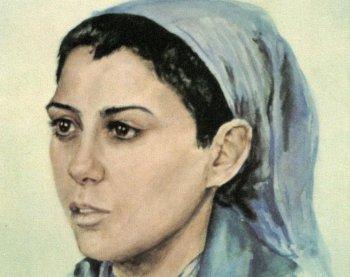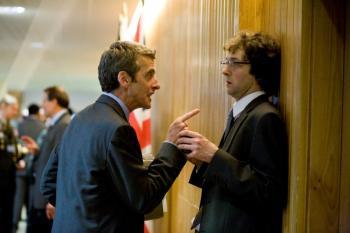Complete with, suspense, controversial ideas, and daunting Vatican ritual, the highly anticipated film Angels and Demons hits screens with many of the same players as the The Da Vinci Code. Both films, adapted from best-selling novels from Dan Brown, tackle the complicated themes of theology, faith, and science at the core of the thriller.
Set in Rome following the death of the Pope, cardinals are assembling for the ancient Papal election process. Four leading candidates are kidnapped and threatened to be killed on the hour—allegedly by the Illuminati, a controversial underground organization and enemy of the Church.
The Vatican summons Harvard professor of religious iconology Robert Langdon (Tom Hanks) to help solve the ticking-clock case along with the beautiful and enigmatic Italian scientist, Vittoria Vetra, (Israeli actress Ayelet Zurer). Hanks reprises his role as the cerebral academic who states his position on religion in the film, “Faith is a gift I haven’t yet received.”
Ron Howard returns to the directing chair as does screenwriter Akiva Goldsman, who is joined by veteran writer David Koepp in creating a clever, fast-paced screen adaption of Dan Brown’s source material.
“There is something unique about what author Dan Brown has created in his Robert Langdon character,” says Howard in the press notes.
“It stimulates so much curiosity and research … you want to understand Bernini, Galileo, their relationships with the Vatican, with the art world, with science, and the mystery of the Illuminati.”
Finding academia and science in opposition to the church and religion is the main thread in the story. Angels and Demons references a time when they were not at odds with each other, but both ways to understand the mysteries of our world.
The film also extends the possibility, or perhaps argues for the necessity, for art, religion, and science to once again align, echoing the sentiments of possibly the most famous mind and scientist of the last century, Albert Einstein.
He said in a letter in 1941 “But science can only be created by those who are thoroughly imbued with the aspiration toward truth and understanding. This source of feeling, however, springs from the sphere of religion … The situation may be expressed by an image: science without religion is lame, religion without science is blind.”
Angels and Demons as the title suggests, reveals both sides of human nature. Like any good thriller, it is not always clear who is who.
“Whether you believe it or not,” adds Howard, “ it is fascinating stuff, and Dan Brown’s fertile imagination, it leads to a spellbinding set of clues and a great mystery.”
Set in Rome following the death of the Pope, cardinals are assembling for the ancient Papal election process. Four leading candidates are kidnapped and threatened to be killed on the hour—allegedly by the Illuminati, a controversial underground organization and enemy of the Church.
The Vatican summons Harvard professor of religious iconology Robert Langdon (Tom Hanks) to help solve the ticking-clock case along with the beautiful and enigmatic Italian scientist, Vittoria Vetra, (Israeli actress Ayelet Zurer). Hanks reprises his role as the cerebral academic who states his position on religion in the film, “Faith is a gift I haven’t yet received.”
Ron Howard returns to the directing chair as does screenwriter Akiva Goldsman, who is joined by veteran writer David Koepp in creating a clever, fast-paced screen adaption of Dan Brown’s source material.
“There is something unique about what author Dan Brown has created in his Robert Langdon character,” says Howard in the press notes.
“It stimulates so much curiosity and research … you want to understand Bernini, Galileo, their relationships with the Vatican, with the art world, with science, and the mystery of the Illuminati.”
Finding academia and science in opposition to the church and religion is the main thread in the story. Angels and Demons references a time when they were not at odds with each other, but both ways to understand the mysteries of our world.
The film also extends the possibility, or perhaps argues for the necessity, for art, religion, and science to once again align, echoing the sentiments of possibly the most famous mind and scientist of the last century, Albert Einstein.
He said in a letter in 1941 “But science can only be created by those who are thoroughly imbued with the aspiration toward truth and understanding. This source of feeling, however, springs from the sphere of religion … The situation may be expressed by an image: science without religion is lame, religion without science is blind.”
Angels and Demons as the title suggests, reveals both sides of human nature. Like any good thriller, it is not always clear who is who.
“Whether you believe it or not,” adds Howard, “ it is fascinating stuff, and Dan Brown’s fertile imagination, it leads to a spellbinding set of clues and a great mystery.”



Friends Read Free